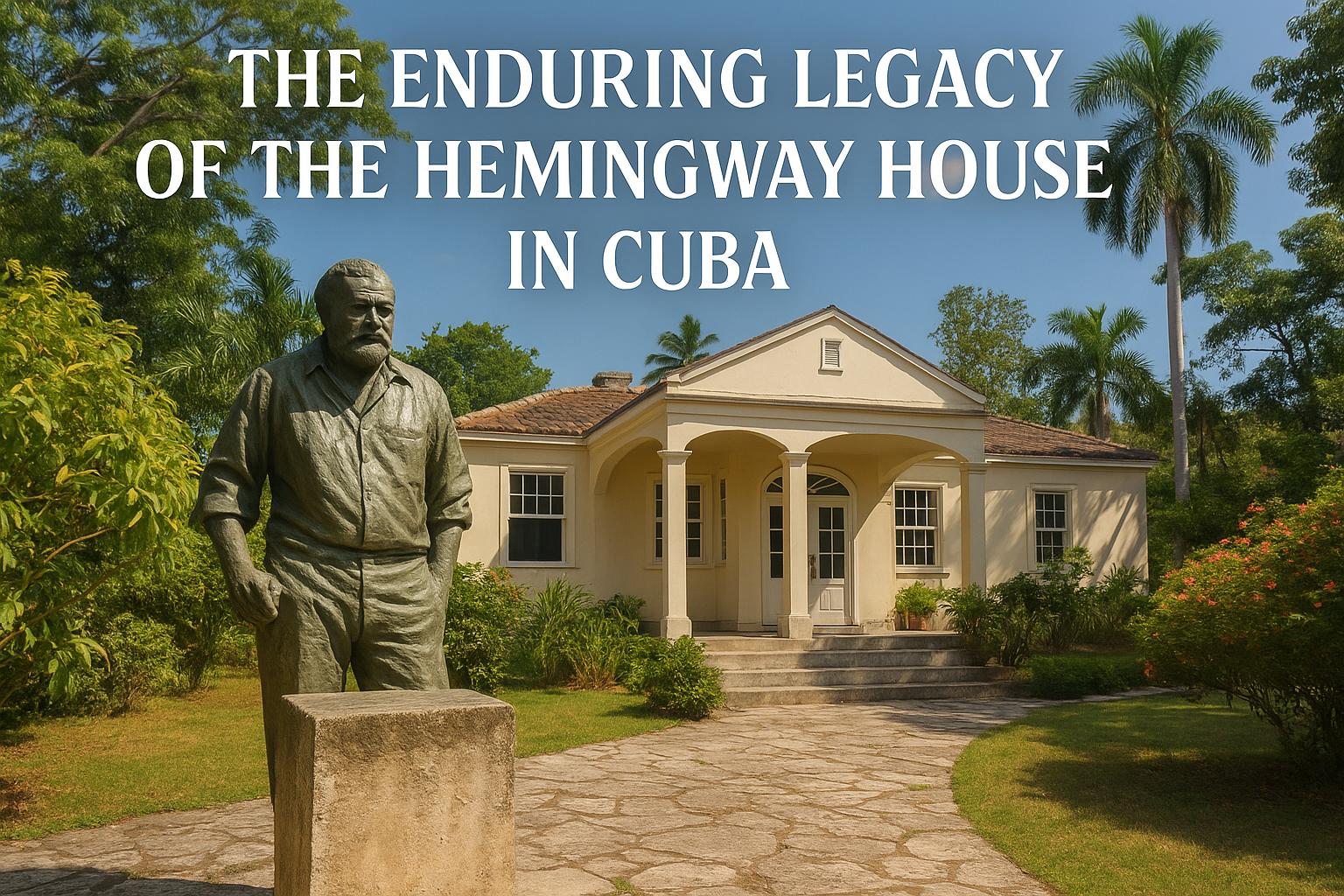Contents
The Historical Significance of the Hemingway House
The Hemingway House, often referred to as Finca Vigía, is situated in the quaint town of San Francisco de Paula, close to Havana, Cuba. This residence holds immense historical importance as it was the home of the illustrious American author Ernest Hemingway from 1939 to 1960. During his time at the Hemingway House, Hemingway penned several of his most acclaimed works, including The Old Man and the Sea, which earned him the Pulitzer Prize in 1953, and A Moveable Feast. The house provides a rare insight into the life of one of the 20th century’s most influential literary figures.
Architecture and Design
Constructed in 1886, the architecture of the Hemingway House exemplifies the typical Cuban colonial style, characterized by its practical and aesthetically pleasing design. The house is primarily a single-story structure, incorporating an open plan that promotes excellent airflow, a necessity in the tropical Cuban climate. When Hemingway took possession of the house, he made several alterations to enhance its functionality and comfort, adapting it to his personal preferences and lifestyle.
One of Hemingway’s prominent modifications was the addition of a rooftop studio. This area became his creative sanctuary where he wrote during the early morning hours, drawing inspiration from the tranquil surroundings and the expansive Cuban skies. This studio was a significant feature as it allowed Hemingway to work in seclusion and focus, which contributed to the prolific output of this period.
Inside, the house remains meticulously preserved, offering visitors the opportunity to see firsthand Hemingway’s choice of furnishings and decorations. The home’s walls are lined with a rich collection of artwork accumulated over the years. These artworks, alongside trophies from his numerous hunting expeditions, offer an intimate glimpse into Hemingway’s expansive interests and adventurous spirit.
Possibly one of the most remarkable aspects of the house is its substantial library, comprising approximately 9,000 books. This collection reflects Hemingway’s insatiable thirst for knowledge and his intellectual curiosity, spanning a wide range of subjects that informed his writing and worldview. Combined, the home’s architecture and its artifacts deliver a powerful insight into the lifestyle and influence of Ernest Hemingway during his years in Cuba.
Conservation Efforts
The Hemingway House has been the focus of rigorous conservation efforts over the years, aiming to maintain its structural integrity and historical authenticity. The designation of the house as a National Monument of Cuba in 1962 marked the beginning of these preservation endeavors, underscoring the site’s cultural and historical value.
In recent times, collaborative efforts between the American and Cuban governments along with non-profit organizations have played a pivotal role in the house’s preservation. These efforts have been crucial in ensuring that the structure and its contents are safeguarded for future generations to study and appreciate. Organizations dedicated to this cause have emphasized the reinforcement of the house’s structure to withstand the tropical weather conditions, preserving original furnishings, and meticulously digitizing Hemingway’s vast collection of documents and manuscripts.
One of the key players in these preservation activities is the Finca Vigía Foundation. This organization has been instrumental in mobilizing resources and expertise, advocating for the necessary restoration and ongoing maintenance of the property. Such proactive conservation initiatives are vital for maintaining the house’s authenticity, ensuring that it continues to offer educational value as a genuine historical site.
Visitor Experience
Currently, the Hemingway House operates as a museum that offers a unique educational experience to its visitors. While exploring the property, visitors have the chance to observe Hemingway’s personal belongings, providing a deeper understanding of his life, work habits, and the inspiration behind some of his greatest literary contributions while residing in Cuba.
Although direct access into the house is restricted, the museum’s layout allows visitors to peer inside through open doors and windows. This design choice ensures that visitors can appreciate the interior while respecting the preservation requirements of this historical residence. The surrounding grounds, maintained in their original splendor, add to the visit’s authenticity and serenity.
Part of the exhibition includes the lush gardens surrounding the house and the famous yacht, Pilar, which is meticulously preserved on the property. Hemingway was known for his love of the sea, and the yacht symbolizes his adventurous spirit and passion for deep-sea fishing. These elements enrich the visitor experience, offering a comprehensive look at Hemingway’s personal life and interests.
For those wishing to delve deeper into Hemingway’s connection with Cuba, additional resources and information are readily accessible through various local tourism platforms. A valuable resource in this regard is the Hemingway International Yacht Club of Cuba, which provides further insights into Hemingway’s influence and activities in the region.
Conclusion
The Hemingway House in Cuba stands as a monument to the enduring legacy of Ernest Hemingway, offering a unique intersection of literature, history, and culture. It is not merely a historical site but a critical component for those aiming to understand Hemingway’s life, motivations, and the context in which some of his most significant works were conceived.
Ongoing preservation of Finca Vigía is essential to ensure that Hemingway’s substantial contributions to literature and culture remain accessible to scholars, literary enthusiasts, and fans worldwide. The house serves as a bridge to the past, permitting future generations to appreciate not only the life and times of Hemingway but also the lasting impact of his creativity and legacy. Through continuous collective efforts, the story of Ernest Hemingway, and by extension, the Hemingway House, will remain an inspiring chronicle within the realm of world literature and cultural history.

